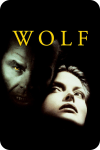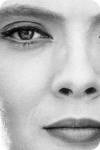The Godfather wears its genius effortlessly—the best (and only?) way to wear it. It’s a triumph of restraint punctuated by self-possessed bombast. It’s a marvel of pacing, with the tension escalating amid a series of elegantly wrenching surprises. There’s Marlon; and there are Al’s exquisite eyes and bearing. Plus, it’s just a lot of fun.
Fittingly, The Godfather: Part II starts off in a tailspin. Without Marlon as Vito to guide its course with his majestic oddities, it fumbles with overly obvious dialogue, bludgeoning Hollywood sound cues, and a general sense of fecklessness. Though Pacino presides over all the double-crossings, crooked senators and, y’know, a Cuban Revolution with a commanding, tightly controlled ferocity, it takes a very long time for it to become something other than the excessive audiovisual version of “99 Problems.” There’s Michael again: alone, annoyed, and disappointed in yet another weak family member or associate.
But something happened during the last scene. Flashback: Sonny, Connie, and Michael are waiting for Pops, who’s off Christmas shopping (wouldn’t you know?). Connie is taken with her future husband and torturer, Sonny is psychotic, and Michael is an idealistic collegiate. It was only here that the sense of doom and loss that permeated the film was sensitized. It was only here—with Michael given a complementary figure to spur the action—that there was enough of a dynamic to incite a visceral reaction. Without the push and pull of his family’s major players, Michael’s sad soliloquy is barren, lugubrious, and a little shallow. Within this context, the texture of his individuation and strength within the tragic pride of his family fascinates.



